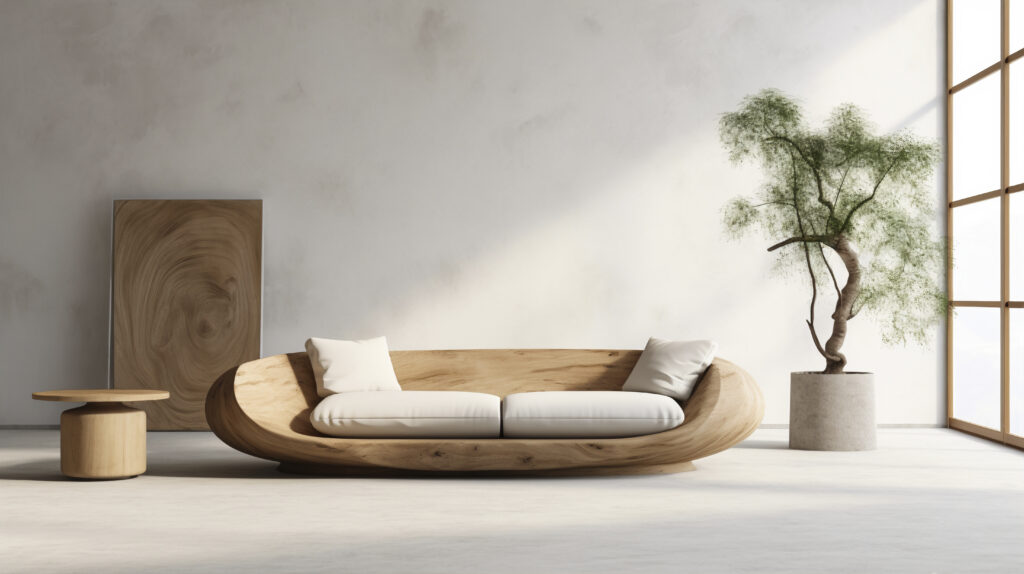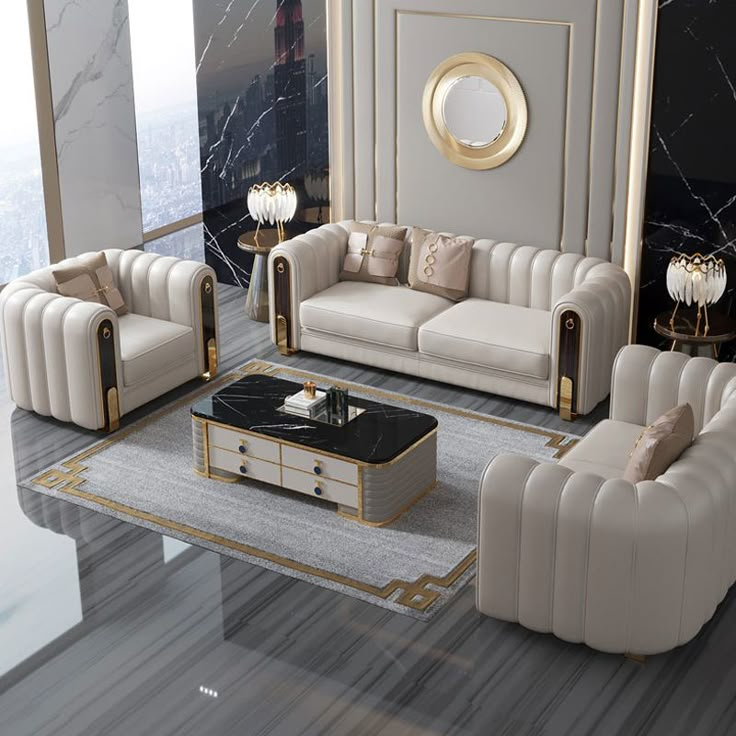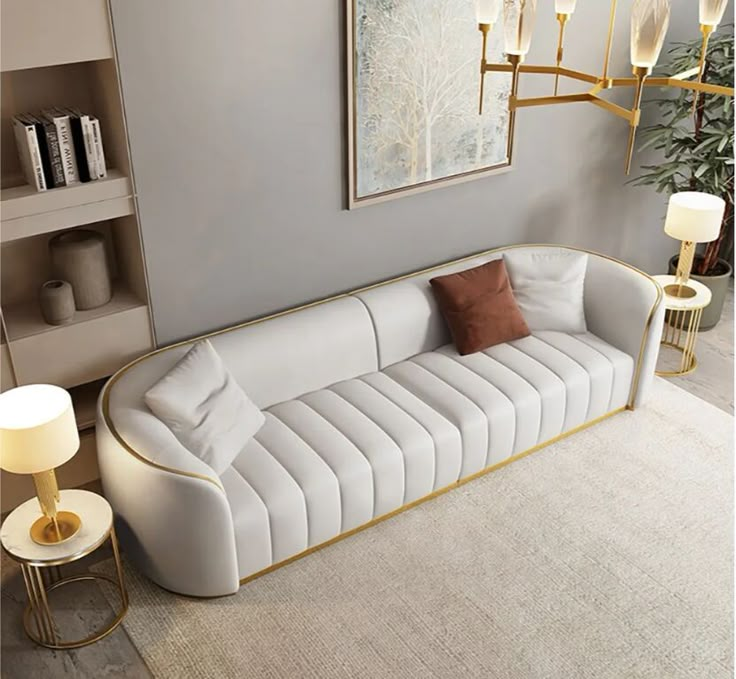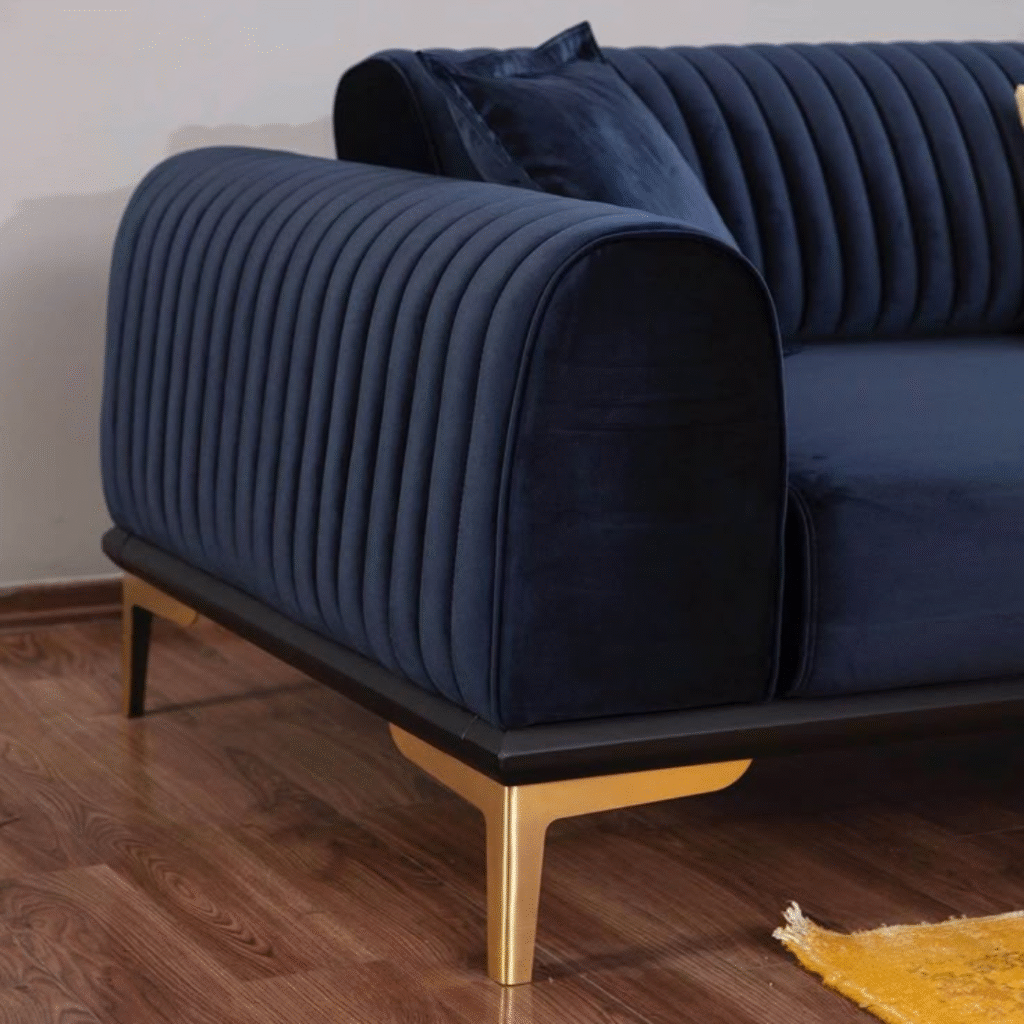When we shop for a Sofa That Brings Comfort the first thing that usually catches our eye is the design or color. But the truth that many overlook is that beauty alone doesn’t guarantee comfort. It’s the precise measurements, from seat depth and height to cushion density, that truly define your daily experience with the most important piece of furniture in your home.
Whether you’re searching for a main sofa for the living room, a chaise lounge for relaxation, or an elegant accent chair, understanding the relationship between your body and the sofa’s design is the key to lasting comfort and smart, long-term use.
In this guide by Zory, we’re not just talking dimensions, we’re exploring the philosophy of comfort. We’ll explain why you shouldn’t fall for a stylish sofa that doesn’t support your back, and why you should consider seat angle before fabric color. Because we believe that every detail, big or small, plays a role in creating a home that looks like you and embraces you every day.

How to Choose the Right Sofa That Brings Comfort Based on Your Height and Sitting Habits
Choosing the right seat depth isn’t just about picking a random number, it’s a crucial factor for ensuring daily comfort. The perfect sofa is one that supports your body the right way, whether you prefer to sit upright or love to lounge and relax.
If you’re someone who prefers to sit in an upright position, look for a seat depth that fully supports your thighs while keeping your knees at a 90-degree angle and your feet flat on the floor. For example:
- If your height is between 170–175 cm, a seat depth of 53–55 cm is ideal.
- For taller individuals (180 cm and above), a seat depth of 58–63 cm provides ample support behind the knees.
- For shorter individuals (under 160 cm), a seat depth of around 50 cm (or approximately 20 inches) ensures your feet reach the ground without hanging uncomfortably.
But what if you’re the type who loves to lounge and slouch into your sofa?
In this case, the deeper, the better. A deep sofa gives you the freedom to move and sink in, especially when combined with large back cushions for extra lumbar support. You can simply add 5 to 10 cm to the standard depths mentioned above for that immersive, cozy experience. Sectional sofas are a great choice in this case, as they offer extended space for lounging or fully stretching out.
A key note:
When the seat height doesn’t match your body, discomfort starts to creep in. Tall users may feel cramped, almost like squatting, while shorter individuals may find their legs dangling, reducing back support and increasing muscle tension.
Remember:
The perfect sofa isn’t just visually appealing, it’s ergonomically correct and body-friendly.
Sofa Height: The Hidden Key to Everyday Comfort

Balancing Seat Depth and Height: Comfort Measured in Millimeters
One of the core principles in sofa design is the inverse relationship between seat depth and seat height: the deeper the seat, the lower the ideal height, and vice versa. This balance isn’t random; it’s what ensures you can sit comfortably for hours without strain or discomfort.
The standard seat height typically ranges between 43 and 48 cm, which allows most people to keep their feet flat on the floor with a 90-degree bend at the knees. However, if you opt for a deep sofa (over 60 cm), a lower seat height, closer to the minimum of this range, is often more comfortable to avoid the sensation of “sinking” into the couch.
The Ideal Sofa Back: Lasting Support for Daily Comfort

Choosing the right back height for your sofa isn’t a secondary detail, it’s one of the most important elements that define your daily comfort. The backrest is the key support point for your spine and upper body, especially when sitting for extended periods.
The ideal back height typically ranges between 66 and 82 centimeters, depending on the user’s height and how the sofa will be used. Taller individuals generally require a higher back to provide real support for their shoulders and neck, while shorter people often find medium to low backs more comfortable, as they offer support without overwhelming the body or restricting movement.
But height alone isn’t enough, the backrest angle also plays a major role in enhancing comfort. A slightly reclined back increases relaxation, making the sofa ideal for lounging, reading, or watching TV. A gently sloped back allows the body to rest naturally, reducing pressure on the lower back, especially when paired with well-placed support cushions.
Conversely, if you prefer upright sitting, for reading, working, or formal posture, a sofa with a more vertical back may be your best option. These backs are often medium in height and designed to accommodate adjustable or supportive cushions.
Design Tip:
For formal living spaces or reception areas, opt for a taller, upright back to maintain a structured appearance. For cozy family rooms or relaxing lounges, go for a slightly reclined back with a height of 70 to 78 cm, offering the perfect blend of elegance and comfort.
Chaise Lounge Length: Relaxation Begins with the Right Fit

The chaise lounge is the ultimate choice for those who love to relax and stretch out, whether it’s for reading a book, taking a short nap, or enjoying a favorite show. But this comfort is only fully achieved when the length and depth of the chaise are well-suited to the user’s body.
The ideal length for a chaise lounge ranges between 150 to 180 cm, depending on the primary user’s height.
- For individuals between 160–170 cm, a length of 150–160 cm offers enough space for full-body relaxation without feeling cramped.
- For taller users (175 cm and above), a chaise of 170–180 cm is recommended to comfortably support the legs without forcing the knees to bend or the body to hunch.
Seat depth is another key factor, ideally ranging between 55 and 65 cm to allow enough space to sit comfortably with a supportive back cushion. The seat height should be between 40 and 45 cm from the floor for easy access, especially when used in living rooms or dedicated lounging corners.
Pro Tip: Don’t just look at the length, backrest design matters too. A gently reclined backrest, tilted at 100–110 degrees, greatly enhances comfort. For added relaxation, pair it with a supportive cushion for the neck and head.
Armrests: The Overlooked Key to Everyday Comfort

When choosing the right sofa, many people focus on the overall look or fabric, often overlooking one of the most essential elements of daily comfort: the armrest. While it may seem like a minor detail, a well-designed armrest can make a huge difference, especially for sofas used frequently and for extended periods, like those in living rooms.
The ideal armrest width typically ranges between 15 to 20 cm, providing enough space to lean on comfortably without putting pressure on the arm or shoulder. Additionally, the height of the armrest from the seat should fall between 18 and 24 cm, creating a natural, ergonomic resting position whether you’re relaxing, reading, or using a smart device.
Why is this important? Because a sofa meant for daily use shouldn’t just look great, it should support your body and promote long-term comfort. A well-proportioned armrest helps distribute weight evenly, reduces tension in the shoulders and neck, and ensures a more relaxed seating posture during prolonged use.
Common Pitfall: Don’t be fooled by show-stopping designs that lack practical armrests. These “statement” sofas may look stunning in showrooms or on Pinterest, but they belong in entryways or short-term seating areas, not in your main living space, where every moment of comfort matters.
Why Should an Accent Chair Be Slightly Lower Than the Sofa?

The main reason is to achieve optimal comfort and ergonomic support. When an accent chair, be it a reading chair, occasional chair, or side bench, is proportioned to suit the user’s height and posture, it helps prevent issues like back strain, neck tension, or numb legs.
But why should a chair be slightly shorter than the sofa? Here are the key reasons:
Pelvic and Knee Support
A chair that’s a bit lower than the sofa allows your feet to rest firmly on the ground, maintaining a natural 90-degree (or slightly less) bend at the knees. This seating posture reduces pressure on joints, especially important during long sitting periods.
Ease of Sitting and Standing
Lower chairs make it easier to sit down and get up, which is especially helpful for the elderly or those with joint pain. A chair that’s too high may feel like you’re climbing into it, while one that’s too low can be a struggle to rise from.
Visual Flow and Layering
In multi-seating spaces, a gentle transition in seat heights between the sofa and side chairs creates a pleasing visual flow. A slightly shorter chair softens the arrangement and avoids visual clutter, allowing the sofa to remain the visual anchor of the room.
Functional Differentiation
Sofas are often used for lounging or deeper seating, while accent chairs are more suited for upright, shorter-duration sitting. A difference in height reflects this difference in function and provides a range of comfort options depending on the activity.
In Summary:
Choosing an accent chair that’s slightly lower than the sofa isn’t just a design choice, it’s a smart ergonomic decision. It creates harmony between function, comfort, and aesthetics, making the space both inviting and supportive for everyday living.
Sofa Cushion Foam: Best Types & Ideal Density for Long-Lasting Comfort

What Is Foam?
Foam is the core material used inside sofa cushions, and it varies based on:
- Type (Standard, High-Density, Memory Foam)
- Density or firmness level (measured in kg/m³)
Top Foam Types for Sofas:
1. High-Density Foam
- Ideal for everyday-use sofas that experience heavy wear.
- Maintains shape over time and resists sagging.
- Recommended density: 32–40 kg/m³
- If you need firm, long-term support, choose 40 kg/m³.
- If you prefer softer comfort at a lower cost, 32 kg/m³ works well.
- Best used in seat bases and core areas of the sofa.
2. Memory Foam
- Often used in top comfort layers or back cushions.
- Conforms to body shape for exceptional comfort.
- Not recommended as the primary base, it softens and compresses with time.
- Ideal as a thin topper over a firmer base foam.
3. Medium-Density Foam
- Suitable for moderate use, guest rooms, or occasional seating.
- Balances comfort and affordability.
- Typical density: 25–28 kg/m³
- Good for side sofas or majlis-style setups.
4. Fiberfill (Hollow Fiber)
- Commonly used in back cushions, not in seat bases.
- Offers plush softness but lacks firm support.
- Best when blended with light foam or compartmentalized in cushion pockets for better shape retention.
How to Choose the Right Foam for Your Sofa?
- For daily-use sofas (living room):
Use high-density foam at 40 kg/m³ for firm, long-lasting support. - For formal settings or limited use:
Medium-density foam (around 32 kg/m³) is more than adequate. - For luxurious comfort or chaise lounges (chaise longues):
Add a memory foam layer or premium down/feather top over a firm foam base. - For back cushions:
Use a mix of fiberfill and light foam for both comfort and structural shape.
Pro Tip:
Higher foam density increases resistance to pressure, but be mindful of balance. A cushion that’s too firm may become uncomfortable for long sitting sessions, while too soft may lead to sagging and poor posture.
ZORY: Because Finding the Perfect Sofa Shouldn’t Be Complicated
At Zory, we don’t just inspire your interior design journey, we help you make smart, personalized decisions that truly reflect your lifestyle. With intelligent filters and recommendations based on your taste and room dimensions, you can explore a curated selection of sofas with precise measurements, diverse styles, and premium materials.
But that’s not all, Zory also helps you locate each product, compare prices and models, and visualize your choices directly in your space with 3D rendering tools.
Whether you’re searching for a cozy living room sofa or a statement piece for a narrow hallway, Zory simplifies the process, saves your time, and turns your selection into a confident, inspiring experience.
